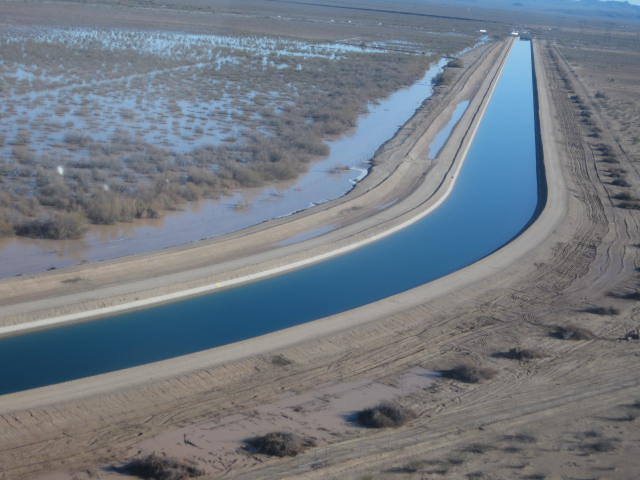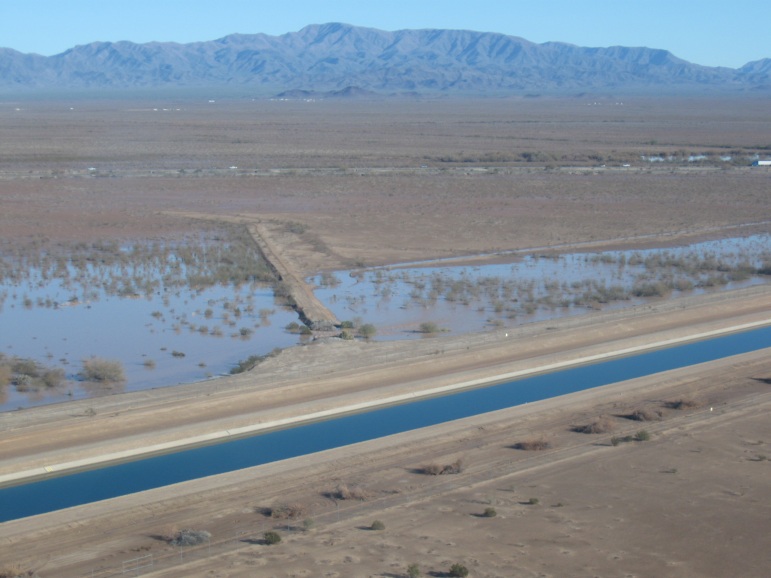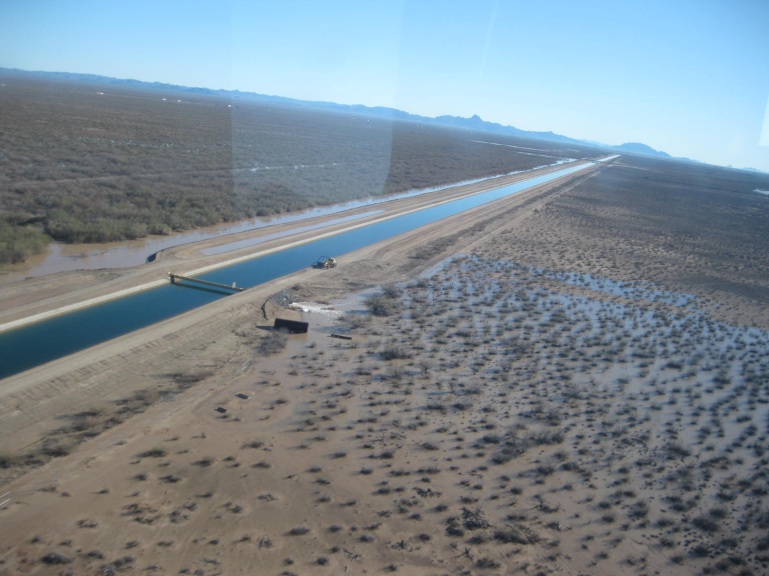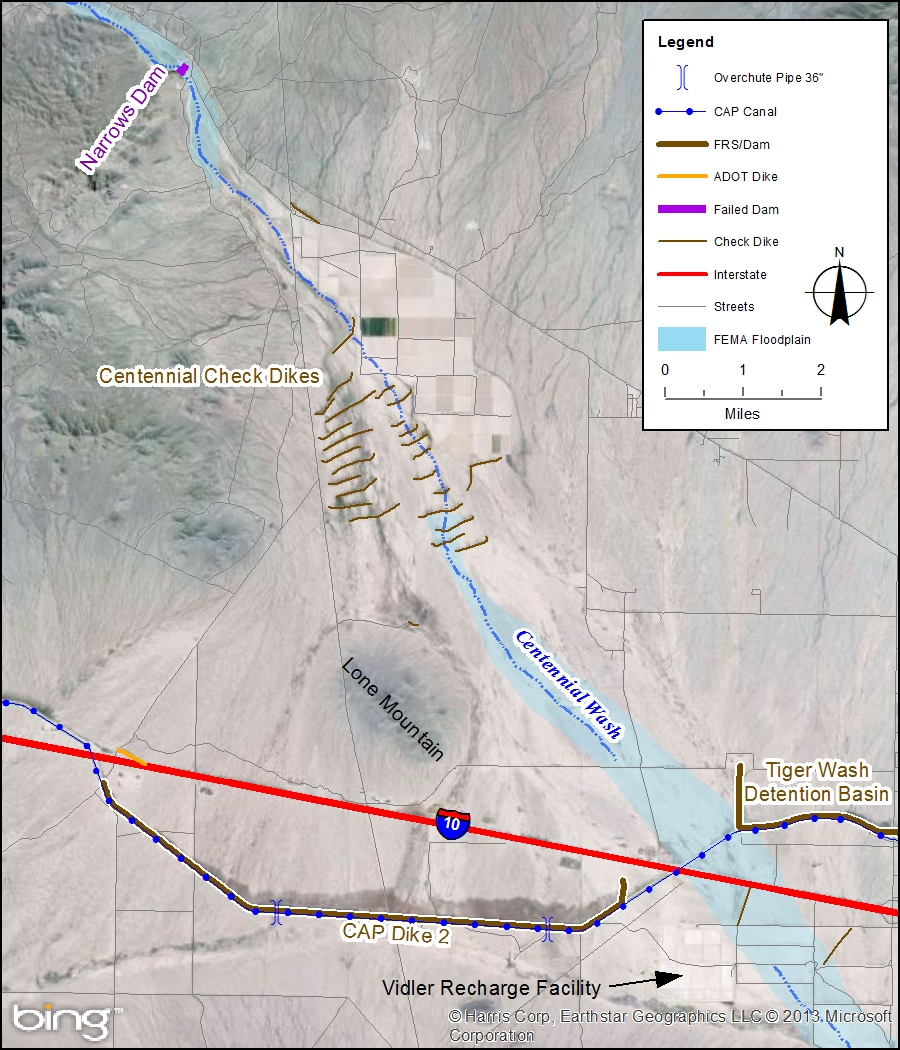Problem
- The original USBR design hydrology for the Centennial Wash crossing of the CAP canal did not recognize the diversion of flow around Lone Mountain upstream (north) of the canal.
- The design of the protective dike upstream of the CAP canal only accounted for runoff from the local drainage area of 29 square miles rather than storm flows from the actual drainage area for Centennial Wash at the canal crossing in excess of 700 square miles.
- Impounded water behind the dike is conveyed over the canal through two 36-inch pipe overchutes and a notch in the east end of the dike. Recent flood events in October 2000 and January 2010 resulted in impoundment upstream of the canal with water surface levels very near the existing crest elevation in some locations.
Approach
- The purpose of this study is to evaluate the current level of protection provided by the dike embankment upstream of the CAP Canal; present and evaluate options to improve the level of protection for the canal provided by Dike 2, including high level construction cost estimates; and provide a tool for informed decision making about risk assessment and acceptability. To achieve these objectives, the work plan is organized into three major tasks:
- Data Collection and Base Conditions. Key elements of the Data Collection and Base Conditions tasks include: topographic surveying, past hydrologic study collection, past flooding investigation, watershed delineation, drainage structure as-built drawing collection, and a comparison of the current embankment crest elevation to the original crest.
- Hydrologic Study. The Hydrologic Study (Task C) task includes HEC-HMS hydrologic modeling, FLO-2D hydrologic and hydraulic modeling, and model calibration to gage and other anecdotal information.
- Mitigation Alternatives and Candidate Assessment Summary. Key elements of the Mitigation Alternatives and Candidate Assessment Summary (Task D) include preliminary alternatives formulation, conceptual alternatives evaluation, concept design plans, and high level cost estimates.
Solution
- Alternative mitigation measures to improve the level of protection to the CAP Canal provided by the dike embankment were investigated.
- Conceptual designs were established and high level cost estimates for each were developed.
- Risks and impacts of each alternative were also described and contrasted with the other alternatives. The Centennial Wash Hydrology Study will be used as a tool by CAP to formulate their conclusions regarding a recommended alternative based on the various costs, risks, and impacts of each of the evaluated options.
Location
La Paz County, Arizona
Client
Central Arizona Project
Project Leads
Rob Lyons
Ted Lehman
Patricia Quinn



